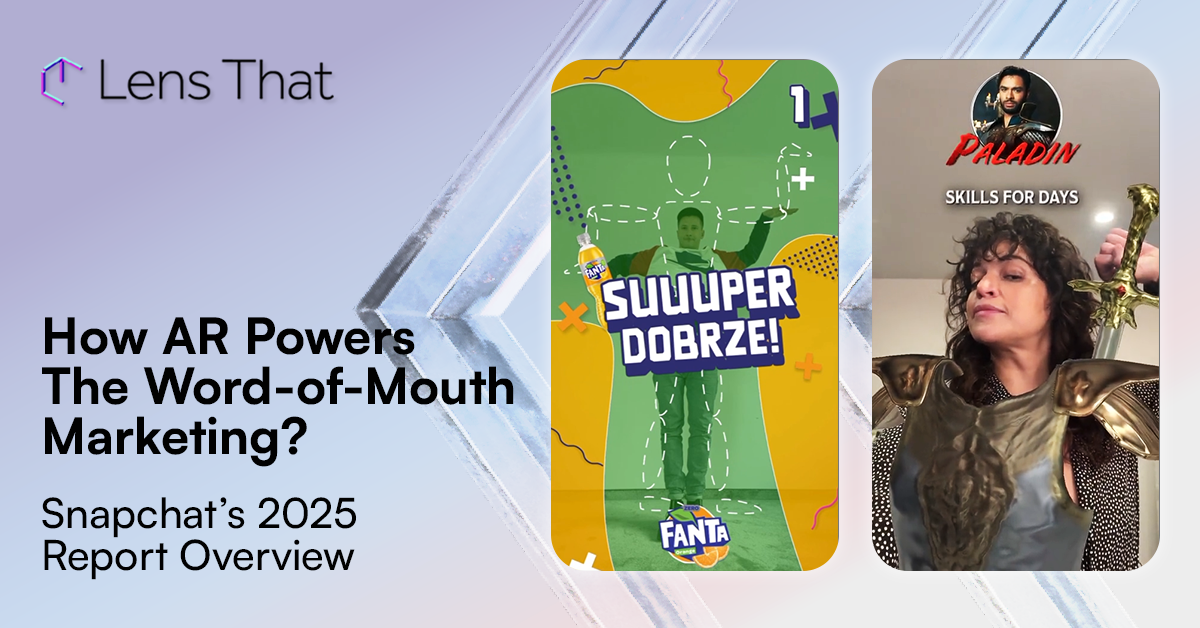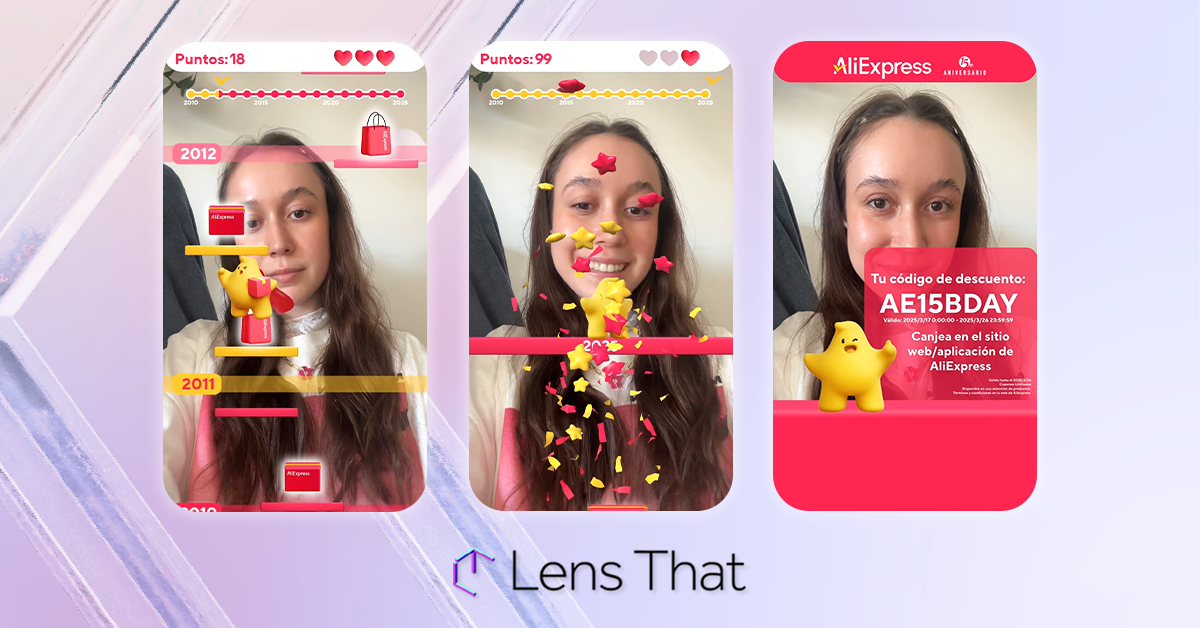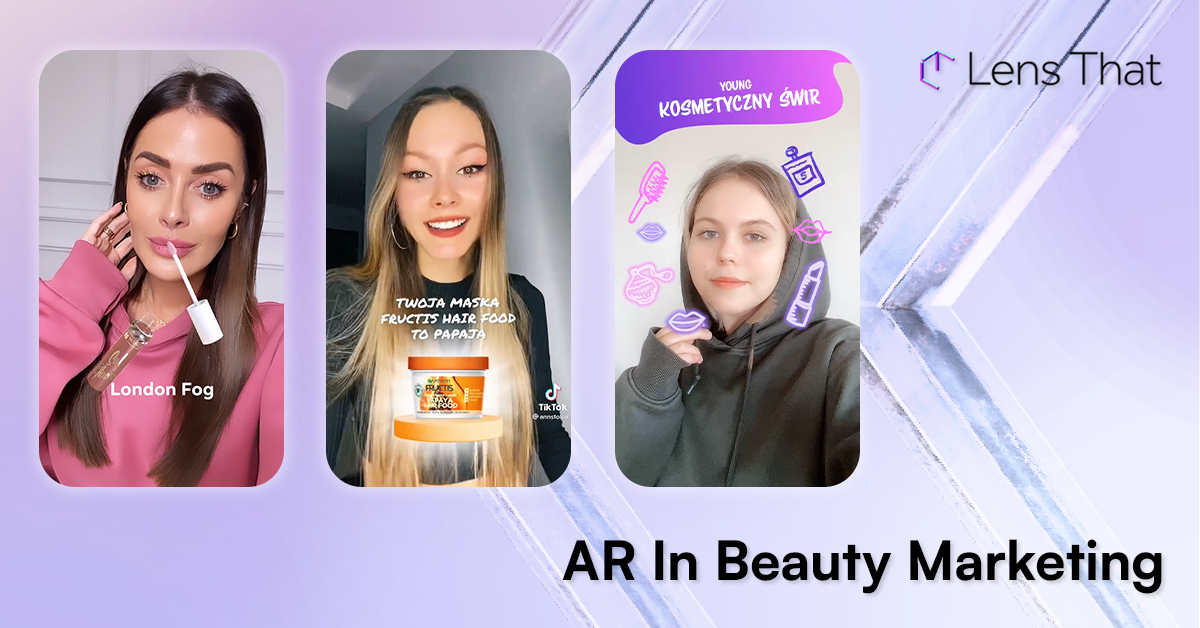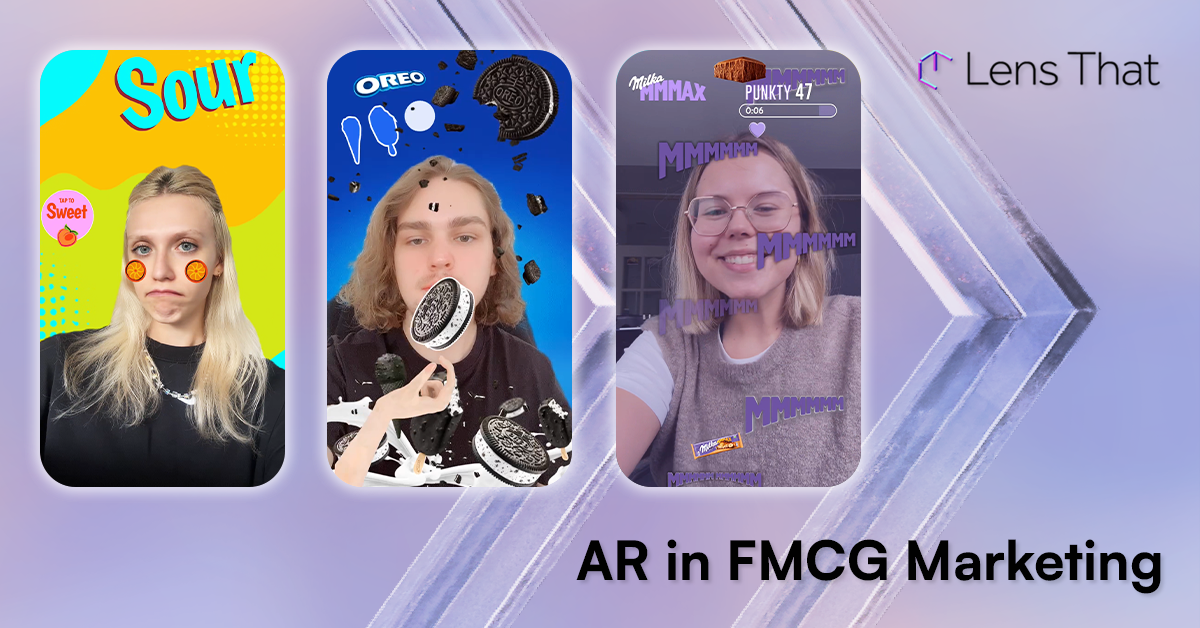
How AR Powers The Word-of-Mouth Marketing? Snapchat’s 2025 Report Overview
Incorporating Augmented Reality into your marketing strategy can boost consumer trust and create a loyal community for your brand. Discover the science behind it in our article, featuring insights from Snapchat’s 2025 report on AR-driven word-of-mouth marketing.
At the beginning of 2025, Snapchat partnered with Tinuiti to explore a growing question: what makes Augmented Reality such a powerful marketing tool? Their report not only confirms AR’s value in brand strategy but also delves into the psychology behind it, revealing how AR Filters naturally fuel word-of-mouth marketing.
When we talk about AR in marketing, the conversation often centers on technical capabilities. But understanding the human side of the phenomenon is just as important. What drives social media users, especially Snapchatters, to engage with AR? And how can brands respond to those motivations to build the perfect campaign?
It all comes down to connection. Platforms like Snapchat help users maintain real-world relationships online and form new global friendships that might otherwise be impossible. As an app, Snapchat prioritizes instant visual communication, with most users enhancing their photos and videos using AR, whether for aesthetics, entertainment, or both. No matter the purpose, AR transforms ordinary interactions into emotional, fun, and memorable shared experiences.
Why AR Fuels Word-of-Mouth
According to Snapchat and Tinuiti’s findings, the true strength of AR campaigns lies in organic sharing. When users experience AR Lenses, they don’t just consume the content. They share it. And because AR is easy to access and navigate, it creates a wave effect: users are eager to try the experiences themselves, post their own content, and spread the campaign even further.
The study also found that word-of-mouth marketing is 33% more trusted by consumers than traditional online video ads. It’s simple: a recommendation from a regular user, someone in a similar situation, having the same needs, or someone who has already personally engaged with the product carries more authenticity and influence than a brand-driven ad, which we know shows us the polished version, and not reality.
AR Randomizer for Dungeons & Dragons: Honour Among Thieves
We saw this dynamic firsthand in our AR project for Dungeons & Dragons: Honour Among Thieves. The Snapchat Lens we created for the movie focused on one of the most beloved elements of the D&D community: choosing your character class. The experience offered a fun, personalized way for fans to connect over their shared interests and organically promote the movie at the same time.
The campaign’s word-of-mouth impact was amplified by the film’s cast, who shared their class results on social media, showing fans how easy and fun it was to join in. This celebrity involvement made the experience feel inclusive and authentic, encouraging even more organic sharing within the fanbase.
An Opportunity for Brands
AR Lenses offer brands a subtle and engaging way to introduce products, strengthen customer loyalty, or create a trusting community around the brand. Instead of disrupting users with ads during games or videos, AR invites them to participate—to discover, explore, and interact on their own terms.
With Augmented Reality, it’s the user who seeks out the campaign and initiates the interaction. The brand simply provides the experience, putting the user’s needs at the center of the activation.
Snapchat’s research shows that users often share AR content to strengthen emotional bonds, whether to make someone laugh, deepen a friendship, or spark a conversation. And the best marketers know that the goal of campaigns nowadays is no longer just short-term sales boosts, but rather long-term loyalty and community engagement.
Cheetos-themed AR Transformations
That’s why, in our Cheetos campaign, we leaned into one of Snapchat’s most beloved AR formats: funny face transformations. We created animated masks featuring Cheetos-inspired designs that exaggerated facial features and added playful accessories. The experience didn’t just entertain. It inspired users to share their silly faces with friends, spreading joy and expanding the campaign’s reach organically, without a hard advertising push.
Snapchat’s analysis of AR campaigns showed that sharing AR content was a stronger indicator of campaign success than just the time users spent on the experience. The platform also found that when brands tap into core AR sharing motivations, emotional connection and entertainment, they achieve greater brand lift. However, heavy-handed branding actually reduced share rates, highlighting the need for subtlety, creativity, and direct engagement.
Key Statistics from the Report
81% of Snapchatters agree that Augmented Reality is a fun way to learn about new products, and they are also 1.6 times more likely than users of other apps to use AR to invite friends to shop together. This highlights a major opportunity for brands that have yet to explore AR. Beyond driving awareness, AR encourages group discovery and shared decision-making, turning product exploration into a social, collaborative experience.
Snapchat’s Guide for Brands
In its research, Snapchat suggests that to unlock the full potential of AR-powered word-of-mouth marketing, brands should focus on three key strategies.
First, foster emotional connections by using AR to enrich social interactions, making them more meaningful and engaging. Whether it’s through humor, nostalgia, or personalization, AR should strengthen bonds between users.
Second, integrate AR seamlessly into users’ daily conversations. Rather than treating AR as a standalone gimmick, it should be planned alongside video campaigns and woven naturally into the broader digital experience.
Third, capitalize on discovery by positioning AR as a tool not just for entertainment, but for product exploration.When aligned with consumer interests and current cultural trends, AR becomes a compelling way to introduce new products and spark curiosity
AR isn’t just changing how we entertain ourselves online. It’s reshaping how we share experiences and how brands build lasting relationships with consumers. For marketers, the potential is vast and largely untapped.
Body-Tracking AR Game for Fanta
We saw a similar organic sharing effect in our Fanta project. By creating a gamified AR experience where users had to mimic poses on their screens using body-tracking technology, we encouraged users not only to participate but to share their scores and challenge their friends. This turned a simple brand experience into a competitive, social activity, able to spread naturally across users’ personal networks.
The Potential of AR Marketing
While brands still heavily invest in video campaigns, Snapchat’s data is clear: AR leads when it comes to influencing purchase decisions.
Unlike video ads, AR doesn’t just show a product. It invites users to interact with it. They can try it on, play with it, or even make it part of their daily conversations.
In the new era of digital marketing, AR isn’t just a trend — it’s a tool for building deeper, more authentic relationships with consumers. And the brands that embrace it now will be the ones leading the future of word-of-mouth marketing.
See the full report here.




